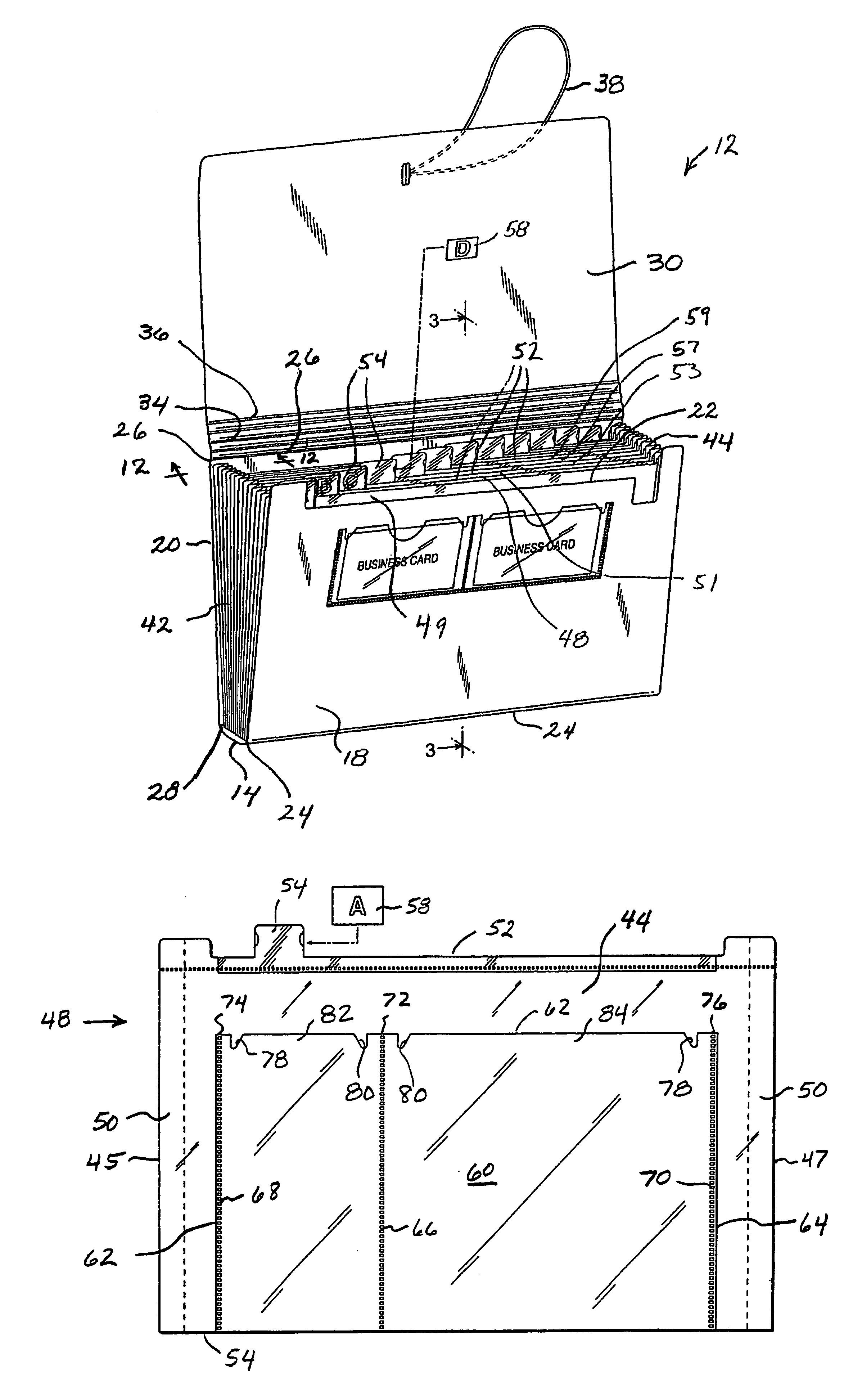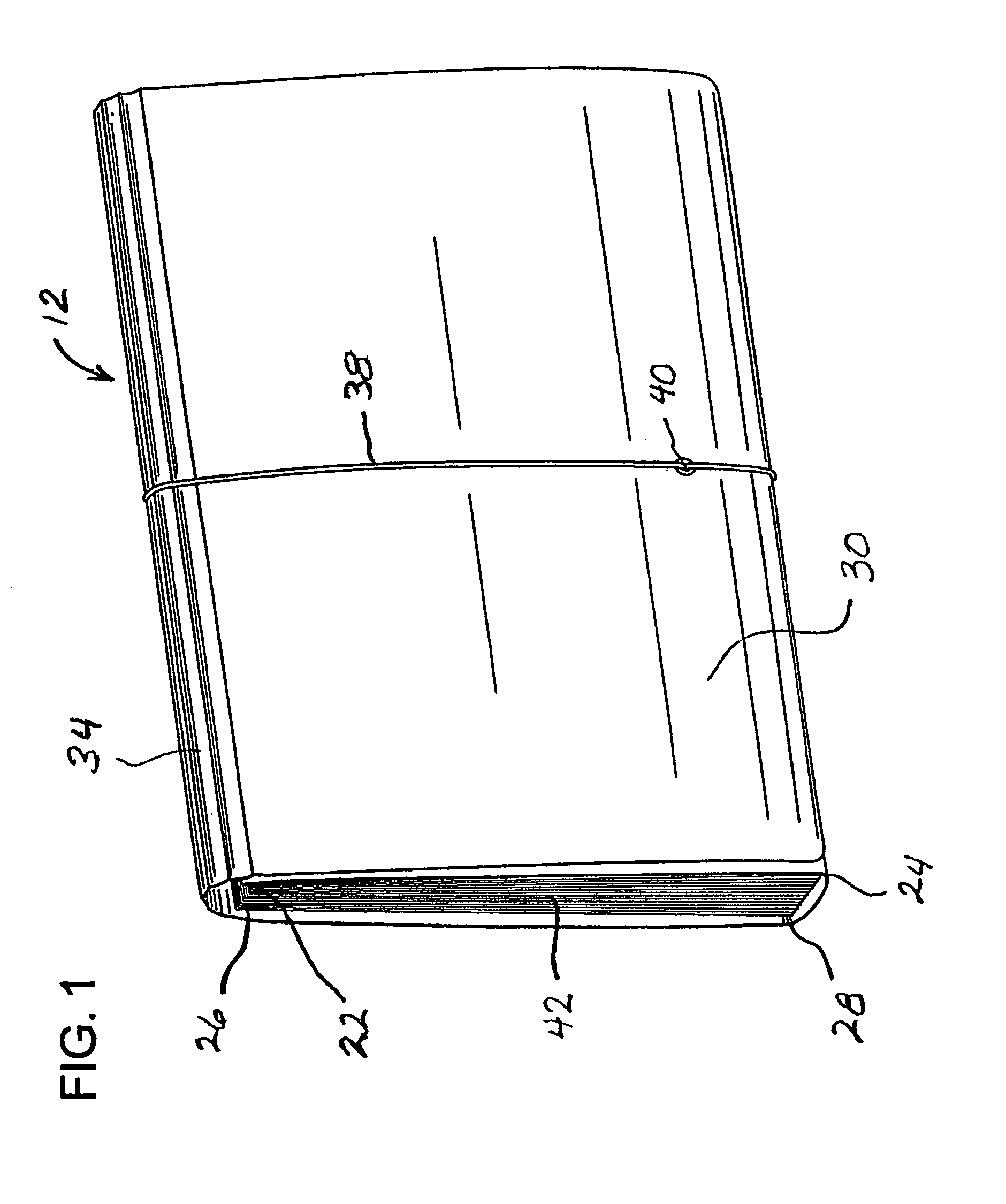Expanding file with multisize pocket dividers
a file and pocket technology, applied in the field of improved file section dividers, can solve the problems of affecting the use of the file section, the inability to easily insert small papers and articles, and the inability to easily reach the file section compartments, etc., and achieve the effect of enhancing the flexibility and facilitating the inserting
- Summary
- Abstract
- Description
- Claims
- Application Information
AI Technical Summary
Benefits of technology
Problems solved by technology
Method used
Image
Examples
Embodiment Construction
[0047]FIG. 1 illustrates a portable document storage device which is an expandable wallet-type filing case 12. The filing wallet 12 has a large, generally rectangular front cover 18, visible in FIG. 2, and a large, generally rectangular back cover 20 shown in FIG. 3. A bottom panel 14 extends between the front cover 18 and back cover 20. Both the front cover 18 and the back cover 20 have a top and a bottom. The top of the front cover 18 is indicated at 22 in FIGS. 2 and 3, while the bottom the front cover 18 is indicated at 24. The top of the back cover 20 is indicated at 26, while the bottom of the back cover 20 is indicated at 28. The file folder 12 has a large folding flap 30 that is foldable over the top 22 of the front cover 18 as illustrated in FIG. 1.
[0048]The front cover 18, bottom panel 14, back cover 20, and folding flap 30 are all formed as parts of a single base sheet of stiff, but flexible plastic material, such a polypropylene or polyethylene, preferably about fifty mi...
PUM
 Login to View More
Login to View More Abstract
Description
Claims
Application Information
 Login to View More
Login to View More - R&D Engineer
- R&D Manager
- IP Professional
- Industry Leading Data Capabilities
- Powerful AI technology
- Patent DNA Extraction
Browse by: Latest US Patents, China's latest patents, Technical Efficacy Thesaurus, Application Domain, Technology Topic, Popular Technical Reports.
© 2024 PatSnap. All rights reserved.Legal|Privacy policy|Modern Slavery Act Transparency Statement|Sitemap|About US| Contact US: help@patsnap.com










